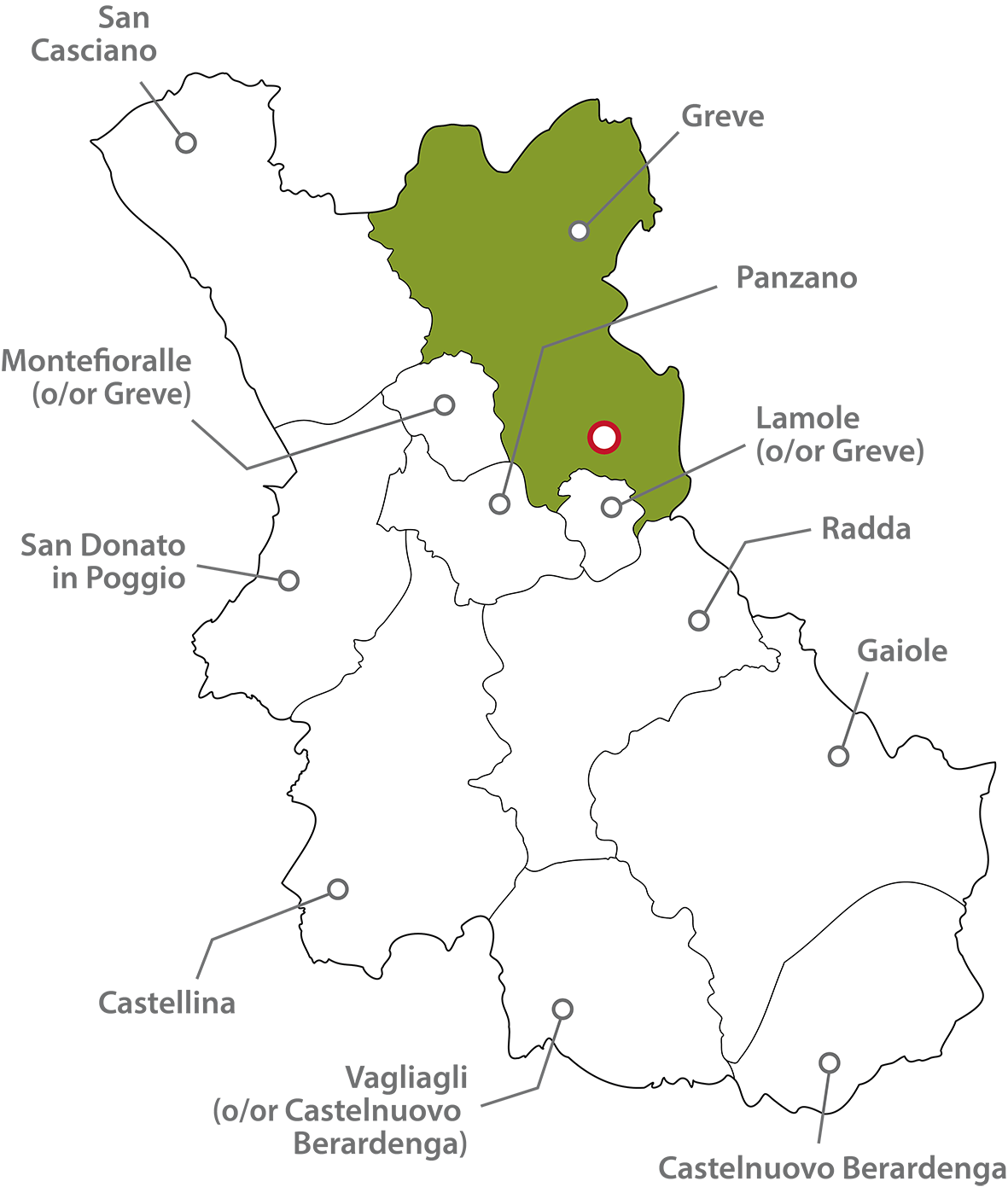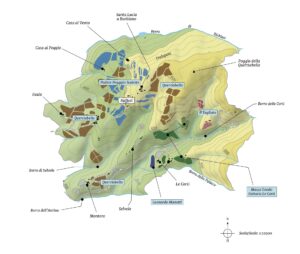Ruffoli

REGION: Toscana
APPELLATION: Chianti Classico
UGA: Greve
TOTAL AREA: 450 hectares (50 under vine)
First Querciabella in the late 1970s, then Poggio Scalette in the early 1990s, joined in recent times by the small estate of Il Tagliato, were enough to give Ruffoli a prominent position among place names of Chianti Classico. A name whose renown today exceeds that of Barbiano (the historic reference for the area) and will probably be even more important in the future, now that the UGAs have changed the approach to Chianti Claassico and its territory.
The often elevated position of its vineyards, at least in the part that is most associated with the name Ruffoli, as well as the exclusive presence of Macigno* seem to make this sub-unit a sort of alter ego of Lamole. But to understand how two areas so close in geology and geography can in fact be quite different from each other, it is enough to observe them from the opposite side of the Greve Valley. Casole and Lamole are enclosed in what effectively is a large amphiteater at the foot of Monte San Michele (see the first panoramic view), whereas Ruffoli is almost projected into a decidedly more open and luminous position, which has as its geographical reference Poggio della Querciabella. Going up the steep dirt road that leads from the valley floor to Ruffoli, one can also perceive from the vegetation that this sub-unit is on average warmer and, above all, drier than Lamole. It is no coincidence that the wines, while retaining the elegance and freshness of fruit associated with Macigno, generally succeed in expressing a firmer and more decisive tannic structure.
The Ruffoli sub-unit, as outlined in this profile, however, is not limited to its historic core, that includes the parish of Santa Lucia a Barbiano as well, but continues south to include the neighboring areas of Montoro and Le Corti. The former was included both in order to unite the entire Querciabella property on one map and because it represents the terminal part of the ridge that from the Poggio della Querciabella descends toward Selvole and then Montoro to an altitude of 300 meters above sea level (this also constitutes the last outpost of the Macigno before the transition to the Sillano Formation typical of the Vignamaggio area).
As for the area of Le Corti, to exclude it from the Ruffoli sub-unit without including it in the Lamole UGA, of which it is officially not a part, would have meant placing it in a sort of limbo that it certainly does not deserve. In the past the estate of the same name enjoyed a good reputation, once counting on 20 different poderi (small farms) and recently returned to the wine market as Masso Tondo.
* For this reason, instead of the geological map, I have preferred to include the physical map below, which gives a clear idea of how important the difference in elevation is.
Further insights: Chianti Classico, The Atlas of the UGAs
Recommended tastings
Chianti Classico – Poggio Scalette; Chianti Classico Gran Selezione Greve – Querciabella
Reference tastings
Chianti Classico Olinto – I Fabbri




